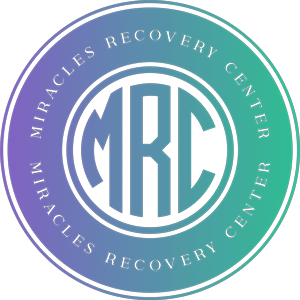Dealing with any addiction can be extremely difficult. Dealing with a substance abuse disorder while also carrying the difficult burden of another mental health or substance abuse disorder can be overwhelming. That’s why knowing what a co-occurring disorder is, is extremely important.
When someone has more than one substance use or mental health disorder, this is known as a dual diagnosis or a co-occurring disorder. Studies show that nearly 2/3rds of patients seeking treatment for substance use disorders also have a co-occurring mental health disorder. In addition, as many as 1 in 4 (25%) of people with a mental health disorder will also develop a substance abuse disorder at some point in their life.

Co-occurring disorders can be especially problematic for teens and adolescents. This period is essential for the development of the brain, the formation of relationships, and the discovery of personhood. Substance abuse disorders and mental health disorders can feed off of one another and create a perfect storm of difficulty for teens, young adults, and their families in the most vulnerable of times.
Substance abuse disorders are especially common with patients who struggle with mood and anxiety disorders. Some of the most commonly diagnosed co-occurring mental health disorders are depression, anxiety, and schizophrenia. The presence of one of these disorders makes a patient nearly twice as likely to develop a co-occurring substance use disorder. These mood disorders are known for altering the behaviors and perceptions of their victims. Patients then often turn to substances such as alcohol to try and mask the difficulty of the mood disorders and end up with co-occurring disorders.
Mood disorders originate from chemical imbalances or deficiencies in the brain. These often lead to impulsive or dysfunctional behaviors, which can often include illicit drug use or excessive alcohol use.

Co-occurring disorders can also originate with substance use and then spiral into a mood or behavioral disorder. Drug and alcohol use affects the brain, and the more these substances are used, the more brain function is altered. Co-occurring disorders can provide a unique danger for anyone, but especially adolescents. Friends and family members must be aware of problematic behaviors and willing to help hold each other accountable.
Table of Contents
Common Co-occurring Disorders in Adolescents
Although co-occurring disorders can take many different forms, some substances and disorders are most commonly found together. Some of the most commonly occurring dual diagnoses are:
- Major depressive disorder and cocaine addiction
- Alcohol addiction with depression and anxiety disorders
- Alcoholism and drug addiction with schizophrenia
- Borderline personality disorder with multi-drug use
While these are some of the more commonly occurring disorders, just about any mental health disorder can lead to a substance use disorder and vice versa.
The adolescent brain is particularly at risk for co-occurring disorders because it is not fully developed. Many adolescents naturally struggle with attention span, hyperactivity, depression, or situational anxiety. Many more young people are being prescribed medications for these disorders, and proper dosage and diagnosis are very important.
Risk Factors Of Co-occurring Disorders
Co-occurring disorders can be especially dangerous for adolescents. Young people are more likely to not seek medical treatment for underlying mental health disorders and are in turn more likely to self-medicate for those disorders. Alcohol is often the drug of choice for those struggling in silence with a mental health disorder, such as depression or bipolar disorder.
Studies show that depression, ADHD, anxiety disorders, and post-traumatic stress disorder increase the risk of drug use in adolescents. In addition, substance use also drastically increases the odds of developing a mental health disorder. For example, marijuana use is associated with an increased risk of psychosis or major depressive disorder, especially in those with a family history of mental illness.
Experts agree that identifying and treating mental health issues can significantly reduce the risk of developing a substance use issue. In addition, reducing substance use will almost universally improve treatment expectations for mental health disorders.
Distinguishing Mental Health Disorders From Substance Use Disorders
Often, mental health disorders can give way to substance use disorders, and substance use disorders can produce mental health disorders. In addition, many of the presenting symptoms can overlap.
Much like how medical symptoms can worsen other medical symptoms, people who suffer from mental illness often experience serious symptoms when drug or alcohol addiction is involved. These symptoms may overlap with previously occurring addiction disorders or can make new ones appear. Some of these overlapping symptoms can include:
- Intrusive depressive thoughts
- Anxiety or fear of social situations
- Inability to maintain work and personal relationships
- Increased heart rate, sweating, rapid eye movement, and restlessness
The more of any substance that is used, the higher the likelihood there is of developing an addiction. If left unchecked, addictive behaviors lead to mental health disorders or symptoms that mimic mental health disorders. It is easy to see why a dual diagnosis can present a complicated situation.
Effects Of Co-Occurring Disorders
Both addiction and mental health issues can create serious problems on their own. It is easy to imagine that a dual diagnosis can drastically alter the life of anyone, and particularly adolescents. Young people with a dual diagnosis will experience adverse effects emotionally, physically, and socially.
Emotional Effects Of A Dual Diagnosis
Stress is a natural byproduct of both substance abuse and mental health disorders. This stress can lead to feelings of disconnect from friends, family, school, or the workplace. As a result, lower self-esteem ad guilt can become daily struggles. All of these issues can weigh heavily on someone and can be made worse with ongoing substance use. In addition, each of these issues is already a prevalent issue that faces adolescents daily, even without compounding substance use or mental health issues.
Different substances produce different emotional effects and interact with their mental health co-morbidities in different ways. The end results will often be increased anxiety, worsened depression, or even suicidal ideation/self-harm.
Physical Effects Of A Dual Diagnosis
While the health consequences of a dual diagnosis depend on the disorder and the substances abused, it is a guarantee that co-occurring disorders will have negative health effects. All present disorders will compound the negative effects of each other and can lead to rapidly declining physical health. In addition, because a person with co-occurring disorders can experience more chronic and extreme effects, they will often be more likely to neglect personal care or put off seeing a doctor.
In addition, prolonged substance abuse and unchecked mental disorders can lead to serious long-term effects.
Long term health effects associated with substance abuse include:
- Heart disease and high blood pressure
- Risk of stroke
- Increased rate of many types of cancer, including liver and lung
- Risk of HIV/AIDS from unprotected sex or drug use
- Hepatitis
- Lung diseases, such as emphysema and cancer
Untreated mental health disorders are associated with increased risk, including:
- Nutritional deficiency and metabolic disorder
- Heart disease
- Lung deficiency
- Muscle and bone weakness
- Sexual performance issues and infertility
Social Effects Of A Dual Diagnosis
Social difficulties will inevitably stem from both substance abuse and mental health issues and this will be compounded by a dual diagnosis. Because a patient with a dual diagnosis is experiencing double the problems of a single diagnosis, they may find relating to society and interacting with people extremely difficult.
As the effects of substance use compound mental illness, many people will distance themselves from friends and family, who in turn will find it difficult to maintain closeness due to erratic behavior.
A dual diagnosis will also increase the likelihood of encountering financial problems, employment disruption, and housing loss. Increasingly unpredictable behavior accompanied by health struggles can lead to disruptions in our lives that can affect even the most stable-seeming people.
A dual diagnosis can also increase the stigma surrounding an individual as behavior and health become less predictable. This will lead to poor support systems and loss of relationships with friends and family. Effective treatment for a dual diagnosis will address the disorders themselves, as well as aid in reintegration into social structures.
Treating Co-Occurring Disorders In Adolescents
The most important thing to do when treating co-occurring disorders is to figure out which symptoms are coming from which disorders. This process is called making a differential diagnosis. This is important because the treatment for a substance use disorder can be very different from the treatment for mental health disorders.
Providers will use reports from the patient, family, teachers, and other doctors, as well as their observations, to perform an evaluation. This will help them provide a diagnosis and determine the best course of treatment.
To effectively treat the co-occurring disorders, both presenting disorders must be treated at the same time. IT is important to understand the symptoms and treatments of all the disorders involved so that each may be treated individually.
Treatment for co-occurring disorders may include therapy, medication, or a combination of the two. Some of the most commonly prescribed therapies include:
Cognitive Behavioral Therapy (CBT)
This treatment focuses on changing negative behaviors, improving emotional regulation, and developing healthy coping strategies.
Dialectical Behavioral Therapy (DBT)
This treatment focuses on emotional and social aspects to help change unstable emotions and harmful behaviors.
Motivational Interviewing (MI)
MI focuses on resolving feelings and insecurities to find the internal motivation to change negative behaviors.
Multisystemic Therapy (MST)
MST is a family and community-based therapy that addresses adolescents’ home and family life as well as the environmental triggers of school or work. Family and parent participation and support are extremely important for adolescents struggling with co-occurring disorders. Family therapy can be an extremely effective way to motivate adolescents to tackle some of the presenting behaviors associated with common co-occurring disorders.
Dual Diagnosis Treatment At Miracles Recovery Center
If you or a loved one is suffering from a co-occurring disorder, it’s important to learn as much about your diagnosis as possible. You’re not alone! At Miracles Recovery Center in Port Saint Lucie, FL, we can help treat and manage your mental illness, and not let it take over your life. Contact us today to learn more about how we can help you.

